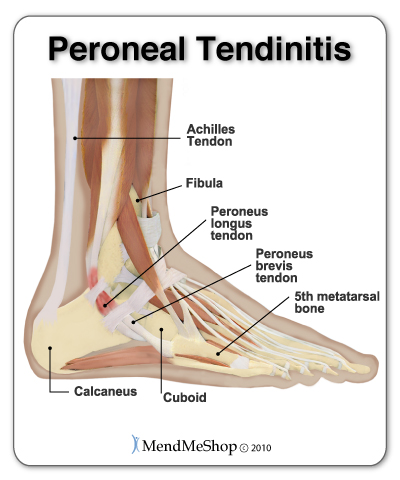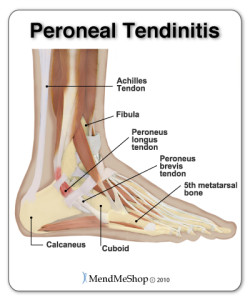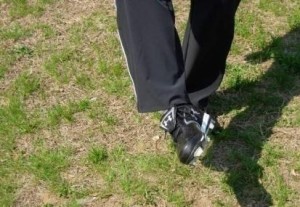Four weeks ago I injured my ankle. The diagnosis? Peroneal tendonitis. Walking was painful. Squating was painful. Lunging was out of the question. Heck, even balancing on my injured foot hurt.
Peroneal Tendonitis
Symptoms of peroneal tendonitis include pain and swelling on the outside of the ankle just below the bony bit or lateral malleolus. Pain is often worse during activity but gets better with rest. There may be pain when pressing in on the peroneal tendons on the outside of the ankle. Pain may be recreated by stretching the peroneal muscles by inverting the foot or turning it inwards as well as attempting to do the reverse against resistance.(from http://www.sportsinjuryclinic.net/sport-injuries/ankle-achilles-shin-pain/peroneal-tendonitis)
Act As If
However, you never would have known I was in pain unless I specifically told you about it. To everyone outside, I acted as if there was no injury. I didn’t speak about it (except in rare cases to get feedback from some people I respect about how to treat it). I didn’t show that I was injured. My martial arts students didn’t know. My fitness clients didn’t know. I acted as if the injury was not there.
This is not some sort of pain tolerance thing or macho BS. It is part of the Warrior Mindset, survival mentality. If I had to use depend on this injured part (no matter what it is) in a survival situation, could I? Also, it helps my mental toughness – not in terms of toughing out the pain, but in terms of not allowing myself to complain and whine about the situation. The injury happened, yes. That is not under my control. What is under my complete control though is how I respond to it.
Why
I noticed that the way I was limping to take the pressure off my injured ankle was beginning to create more problems than it solved. Shortly after starting to limp I began to feel increased tension further up the kinetic chain, creating issues on the other side of my body. My center of gravity shifted to accommodate the limp and so did my balance as well as my highly defined center-line awareness. This short term solution was creating a chain of consequences that could conceivably have a long term affect on my body. So what did I do? I stopped limping. I shortened my stride, took smaller steps, and tread more lightly (like the ninja I am!) to help compensate for the injury rather than limp and add to my challenges.
How I Fixed It
There are 4 main modalities I employed to help speed healing of my injured ankle.
- Rest – if I could stay off it, I did
- Ice – 20 minutes on, 10 minutes off repeated 2 times a day
- Mobility – joint circles, extension, flexion, internal and external rotation
- Dit Dat Jow – Herbal Chinese topical medicine to help with inflammation
Keep Training Through It
An unexpected injury is never pleasant. Unfortunately they do happen from time to time, even though our first priority is to train with our health first in mind and work to prevent injuries from happening. Therefore, the goal is to recover from injury as quickly as possible and to minimize the adverse affect it has on our training and our lives. After it heals the goal should switch to work on strengthening the area and making sure that injury does not happen again.
The whole rest of the body must continue to be trained even if you are resting the injured area. Exercise insures that blood flow circulates to the injury bringing oxygen and nutrition as well as carrying away waste products and helping to speed healing.
Many people get confused when it comes to resting an injury. Instead of backing off and lowering training intensity to give the injury a break they instead decide to stop all training and rest everything. If the injury is severe enough and widespread enough than yes, sometimes this is unavoidable and the most prudent course of action. But most often this simply is not the case.
Be smart about it. Use your own discretion and common sense. If you can, keep going through the injury. Keep training while taking the appropriate measures to speed healing. You will feel better about yourself and not as handicapped by your injury.







2 Comments
hal harris
August 1, 2014ChSecond kyu…so close to getting my. Black belt..had to have a total. Hip replacement . But i still. Want. To get back. Into class..thanx on yo video on how. Walk. Like a Ninja. When i stop training i will be. Dead. Do u. Have any specific training. For someone like me..Alabaster Alabama
Jon
August 1, 2014Hi Hal,
Has your doc cleared you for exercise? If so, check out my book, Warrior Fitness: Conditioning for Martial Arts – http://warriorfitness.org/warrior-fitness-conditioning-for-martial-arts/
It’s a great place to start!
Keep Going!
Jon
Leave A Response